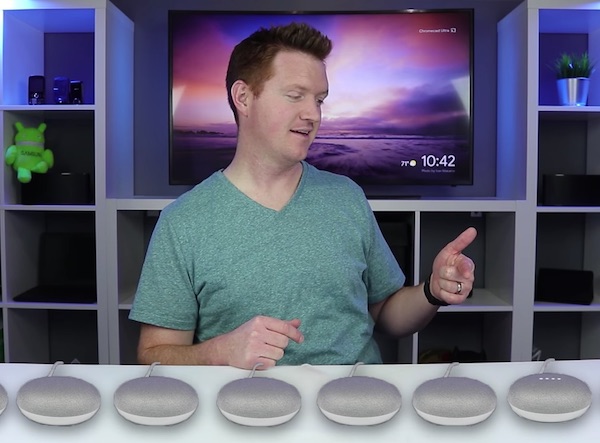Google Assistant Rolls Out Six New Voices
One of the overlooked announcements from the Google I/O developer account this week was the introduction of six new voices for Google Assistant. Google Duplex has everyone so stunned, inspired and outraged that some real news isn’t getting surfaced. Before this week, Google Assistant and in turn, Google Home, had two voice options for the default. The female voice was automatically default from the factory, but you could change to a male voice, “Voice 2.” Updates to Google Assistant this week offer you six additional voices for a total of eight. Four are female and four are male to keep things even among the genders. Cathy Pearl had this helpful Tweet that quickly walks through each of the new voices.
Google just launched 6 new voices for the Assistant! To try them out, go to the Home app on your phone, More settings–>Preferences–>Assistant Voice. As you go through the voices, the Assistant keeps talking instead of starting over.. nice UI touch. pic.twitter.com/ZheVxZhgie
— Cathy Pearl (@cpearl42) May 9, 2018
Personalizing Google Assistant with a Preferred Voice
A more extensive demonstration is available in the video below from Tech with Brett with host Brett Bristow. This demo offers a sampling of each of the voice options and shows how little things like when Google Home sings you a song that the voice will be that of your selected assistant.
To check out the new voices you can go into either your Google Home or Google Assistant app and select Settings > Preferences > Assistant Voice. You can then select your preferred voice and hear all of the options. Voices are a way that Google differentiates in a meaningful way from Amazon Alexa in terms of user experience. You can set your default voice based on what works best for you. We have been using Voice 2 in my household for the past six months and find it to be a nice change.
The Pros and Cons of Voice Assistant Personification
Alexa is always Alexa’s voice. No options. That approach optimizes for consistency and trust in “Alexa,” but also is one of the potential benefits that Google has access to by not personifying Assistant to the same degree. Changing Alexa to a male voice would disrupt the persona that is already well established. Google has less of a barrier to overcome for people to change the voice because personification is limited and not gender specific.
Keep in mind that these are not the only voices you will hear through Google Home. Google Action developers must choose a different set of voices for use in their Assistant apps. Google creates clear vocal differentiation between the first-party assistant controlled wholly by Google and the third-party Google Actions developed by others. Mark Webster, CEO of Sayspring, refers to this as the operator model where Google’s default Assistant is like a telephone operator that then whisks you off to third-party Actions and there you get a different voice and persona. Alexa is always the same, both in first-party operation and in third-party skills. The only way to change that is for skill developers to insert recorded audio in place of Alexa’s text-to-speech (TTS) option.
There are plenty of opinions on which approach is better. Google appears to be leveraging its differentiation into additional features that enable more user personalization. What do you prefer: The Alexa or Google Assistant model? Let me know on Twitter @bretkinsella.
Google Announces New Developer Tools for Google Action Monetization, Discovery and Engagement
Google Assistant to Get Follow Up Mode and Compound Requests









